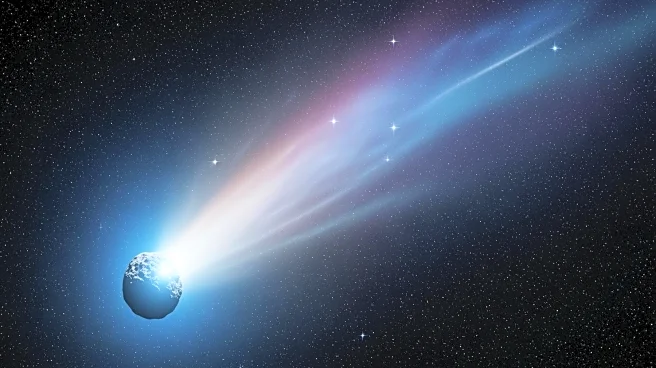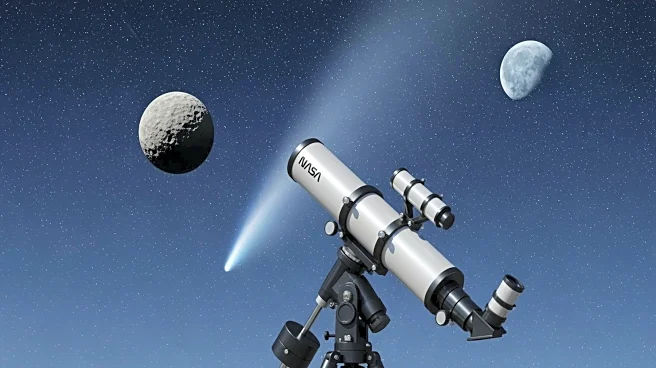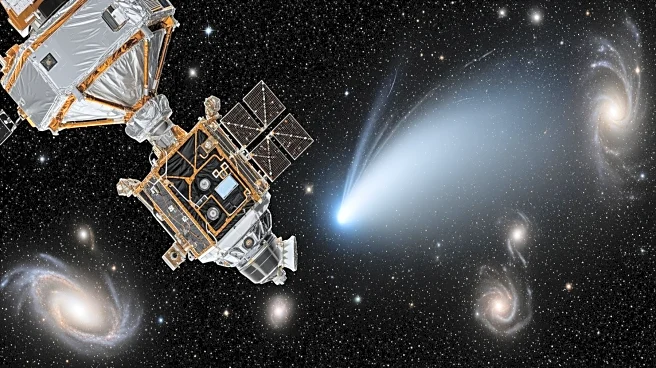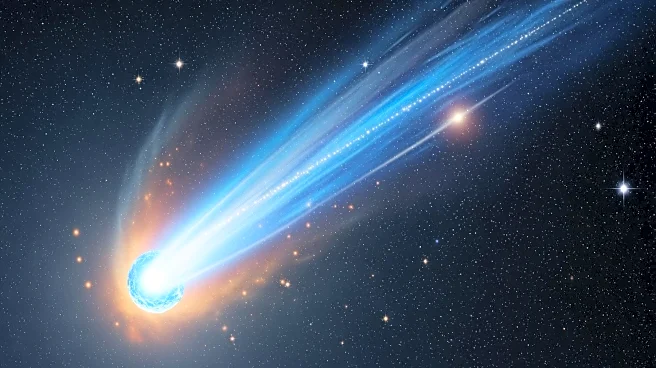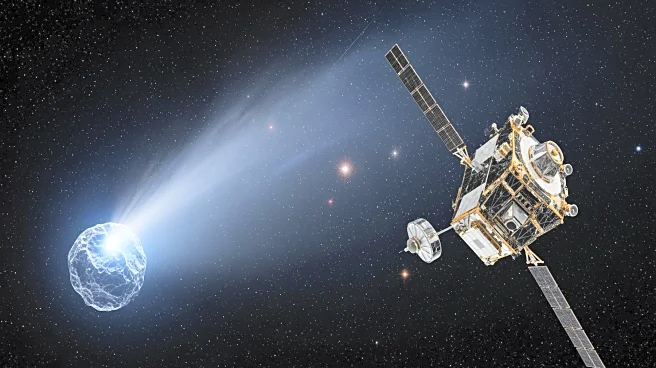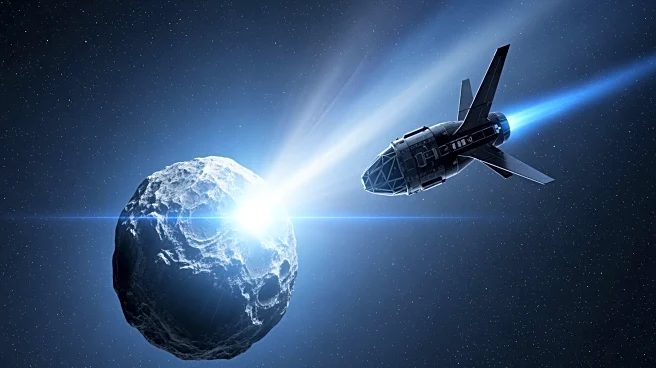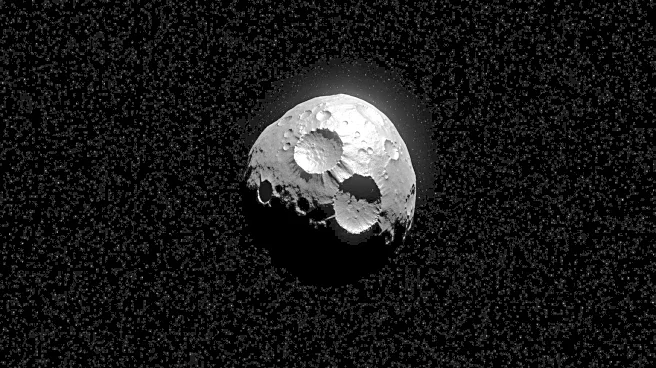What's Happening?
A new celestial object, C/2025 V1, has been identified by astronomer Gennady Borisov, known for discovering the interstellar comet 2I/Borisov in 2019. This object, catalogued by NASA's JPL and the Minor
Planet Center, is described as 'nearly interstellar' due to its orbital characteristics. C/2025 V1's orbit is inclined by 113 degrees relative to the ecliptic plane, similar to the interstellar object 3I/ATLAS, but it does not display a clear cometary tail. The object's orbital eccentricity is slightly above 1, suggesting it might have originated from the Oort cloud rather than being truly interstellar. The possibility of non-gravitational propulsion, such as outgassing, affecting its trajectory is also considered. The object is not directly related to 3I/ATLAS, as their closest approach was 75 million kilometers apart, and the non-gravitational acceleration of 3I/ATLAS is insufficient to bridge this gap.
Why It's Important?
The discovery of C/2025 V1 adds to the growing interest in interstellar objects and their potential implications for understanding the solar system's boundaries and the nature of such objects. The investigation into whether these objects are natural or technological in origin could have significant implications for astronomy and our understanding of the universe. If C/2025 V1 or 3I/ATLAS were found to have technological origins, it would suggest the presence of advanced extraterrestrial technology, fundamentally altering our perception of life beyond Earth. The study of these objects also provides insights into the dynamics of the Oort cloud and the processes that can eject objects into interstellar space.
What's Next?
Further observations and analyses are planned to determine the nature of C/2025 V1 and 3I/ATLAS. Spectroscopic studies, particularly by the Webb telescope, are expected to provide more information on the composition of these objects. As 3I/ATLAS approaches its closest point to Earth on December 19, 2025, scientists aim to measure the outflow velocity, mass flux, and composition of its jets to ascertain whether it is a natural comet or a technological artifact. These findings could either confirm the natural origins of these objects or suggest the presence of advanced propulsion technologies.
Beyond the Headlines
The exploration of interstellar objects like C/2025 V1 and 3I/ATLAS raises questions about the ethical and scientific implications of discovering potential extraterrestrial technology. It challenges current scientific paradigms and could lead to new interdisciplinary research areas, combining astronomy, physics, and even philosophy. The potential discovery of technological artifacts in space could also influence public interest and policy regarding space exploration and the search for extraterrestrial intelligence.



